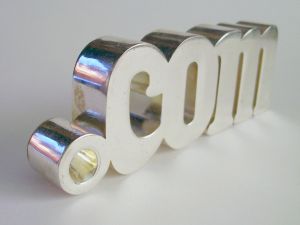When starting a business, now-a-days, thinking of a name that could be registered as a domain is very important [if you will operate a lot on the web]. That said, availability of a name shouldn’t compromise what you are actually trying to achieve with the name. First of all I’ll draw on Chris Garrett’s post on choosing domain names [see How To Choose A Domain Name]. He identifies some pitfalls of domain name branding and what you should be looking for when choosing one: Conveniently, those points are pretty much in the correct order for brainstorming names. First find one that’s available, then discuss whether it works or not. Does it say what you want? Are there negative images or ideas associated that don’t fit? Is it memorable and easy for new users to find after maybe hearing about it in conversation?
Brainstorm I think the first rule for brainstorming is having a partner. A second opinion is crucial for weeding out what you think might sound good at first but really isn’t right. This is almost like instantly having that realization when you think of an idea, walk away, and then come back to it later. Before beginning some guidelines should be laid out. That is, what you are looking for in the name, keywords, length and general ideas associated. This should be kept pretty general and not strictly adhered to if necessary. That way new and better ideas can come up. Throwing ideas at each other can be done in two manners:
- The first is the no-critique approach where no idea is too dumb and everything gets written down. After which you revise the list and whittle it down to only the good stuff. From there you cut more and more until you have the name. If no resolution is found, you do it all over again – eventually the right name will come.
- The second method is more of a conversation and, I think, works best for domain registrations. With each name a snap judgment should be made. Making quick decisions is perfect because domain names are your first point of contact and, generally for branding purposes, should make a good first impression. What’s great about working with a partner and just throwing ideas at each other is, usually, a name will come up that both parties instantly agree on. It’s a zen sort of moment when nothing is said for a second and everyone is in. Like most idea generation, when it happens you will know. Availability More important than anything when talking about domain names is availability. You can’t register something that’s already registered, so brainstorming is important. While brainstorming name ideas there are a few tools that will help. Using instant domain searches are great because they provide instant notification when a domain name is unavailable. This is important when brainstorming because you can instantly have an idea shut down and move on to the next. This saves a lot of time. One’s I’ve used are InstantDomainSearch.com and AjaxDomainSearch.com which work fine, but my preference is AjaxWhois.com for one reason. AjaxWhois stands out because of it’s Favoriting feature. When you come across a name that works and is available [your maybe’s] you can save them on the site for future reference. To Note I have found that sometimes when one of these fast domain searches say a domain is available you will later find, when attempting to register, that it isn’t. In which case it’s a good idea to have your host or where ever you register your domains open as well so you can check the ‘available’ domain names. This is just a case of double checking since, for some reason, those searches make mistakes. Ideas For The Future Darren Rowse brought up an interesting point about future-proofing your domain name and extending it’s use later down the line [see Choosing The Domain Name For Your Blog]. For instance, you don’t want your site to look dated based on it’s name alone. Likewise, if your business [or blog] outgrows the limits of your domain how could you expand properly? Top Level Domains The benefit of sticking to a .com [instead of .net or .com.au etc] is standardization. When talking about your site and letting word of mouth and other marketing do it’s thing, having something that is easy and known works best. When you mention to someone that you have speaker site about monitor speakers that is called Speaker Freaker, you don’t want to be correcting everyone that it’s actually a .net and not the, always assumed, .com. Also to consider is cost. In Australia a .com.au is much more expensive than a .com and requires a registered business number [ABN]. This is great for availability and recognition as a business, but bad for keeping the costs down and, generally, international appeal. Criteria I would group certain criteria to keep in mind when registering any domain name. These are as follows: There is some leniency for the Suitability criteria. You may decide on a name that is almost completely unrelated to your business based on branding alone. Think of Nike or Darren’s example of BoingBoing. With this checklist and a good understanding of what you want the site to do, you should find that all elusive domain name to be easier to snatch than you think.

